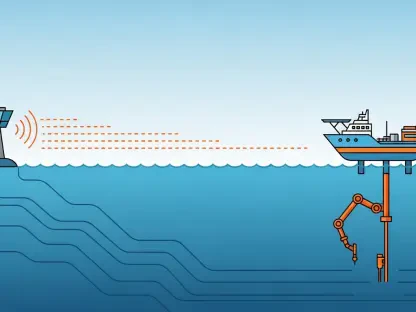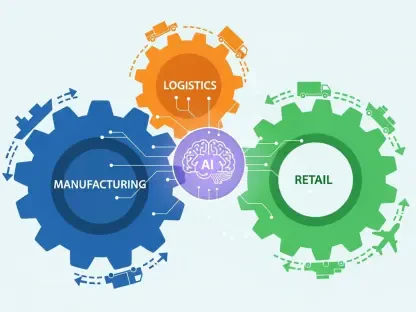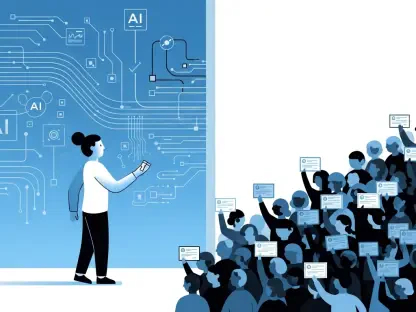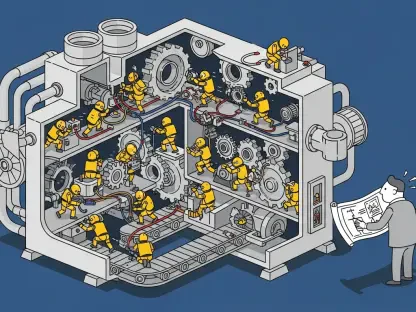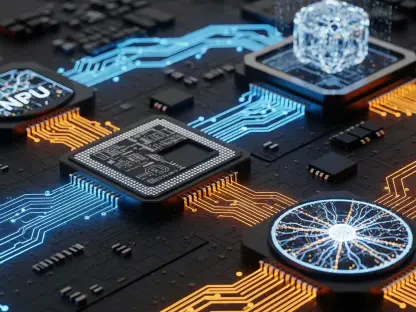In a gaming landscape increasingly shaped by technological innovation, Arc Raiders, an extraction shooter developed by Embark Studios, has emerged as a standout title since its launch on October 30 for PC, Xbox Series X/S, and PlayStation 5. With a remarkable concurrent player count of 150,000, the game has captivated a vast audience, showcasing its polished mechanics and immersive design. Yet, beneath this success lies a simmering controversy about the role of artificial intelligence (AI) in its creation. Statements from Embark’s leadership, coupled with a disclosure on the game’s Steam page, have sparked questions about whether the studio truly avoids generative AI, as claimed. This debate transcends a single game, reflecting broader concerns in the industry about transparency, creativity, and the integration of advanced tech. As players dive into Arc Raiders, many are left wondering how much of their experience is crafted by human hands versus algorithmic processes. This article aims to dissect the conflicting narratives, explore the studio’s stance, and contextualize the issue within the evolving world of game development, offering clarity on a topic that continues to divide opinions.
Unpacking the Popularity of Arc Raiders
The meteoric rise of Arc Raiders in the extraction shooter genre cannot be overstated, as it has quickly become a benchmark for what modern multiplayer games can achieve. Released to widespread acclaim, the title’s beta phase and subsequent launch have drawn massive attention, with player numbers reflecting an enthusiastic community eager for intense, strategic gameplay. This success isn’t merely a statistic; it underscores Embark Studios’ ability to deliver a product that resonates deeply with fans, blending innovative design with engaging mechanics. Beyond the surface-level appeal, the game’s achievements set the stage for a deeper inquiry into its development process. How did Embark manage to craft such a compelling experience, and what tools played a role in bringing this vision to life?
This popularity also amplifies the stakes of the AI controversy surrounding Arc Raiders. When a game garners such a significant following, every aspect of its creation comes under scrutiny, especially in an era where technology’s influence on art and entertainment is a hot-button issue. Players aren’t just invested in the gameplay—they’re curious about the behind-the-scenes methods that shaped their experience. The impressive player count serves as a reminder that discussions about development practices, including the use of AI, aren’t abstract. They directly impact how the community perceives and trusts the studio, making transparency a critical factor in maintaining that bond.
Embark Studios’ Position on AI Usage
At the forefront of the discussion is Embark Studios’ official stance on the use of AI in developing Arc Raiders, articulated primarily through Design Director Virgil Watkins. Watkins has been clear in asserting that the team does not employ generative AI, a term often associated with creating content like visuals or narratives from scratch using algorithms. Instead, he highlights the use of machine learning as a separate, distinct tool that supports development without crossing into the realm of generative technology. This distinction is pivotal to understanding Embark’s approach, as it suggests a deliberate effort to draw a line between different types of AI applications, prioritizing human-driven creativity over automated content generation.
However, Watkins’ statements introduce complexity with the admission that text-to-speech technology is utilized for features such as the game’s ping system, a mechanic also seen in Embark’s other project, The Finals. This technology dynamically generates voice lines, raising eyebrows among those who argue that it falls under the umbrella of generative AI, despite Watkins’ denial. The apparent contradiction between rejecting one form of AI while embracing another with similar traits fuels skepticism. It suggests that the boundaries of what constitutes generative technology may not be as clear-cut as presented, creating a gray area that challenges the studio’s narrative and invites further examination of their development ethos.
Analyzing the Steam Page Disclosure
A key element in the debate over AI in Arc Raiders is the disclosure statement on the game’s Steam store page, which acknowledges the use of procedural and AI-based tools during development. This notice emphasizes that the final product remains a reflection of the team’s creative vision, seemingly aiming to reassure players that human input is paramount. Such transparency aligns with a growing trend in the gaming industry, where studios are increasingly expected to inform their audience about the technologies shaping their games. At first glance, this move by Embark Studios appears to be a proactive step toward openness, addressing potential concerns before they escalate into broader criticism.
Yet, the vague wording of the disclosure creates more questions than answers, particularly when juxtaposed with Watkins’ specific denial of generative AI. If the studio is confident that their use of AI doesn’t include generative forms, why does the statement use such broad language that could imply otherwise? For many in the gaming community, this lack of specificity feels like a missed opportunity to provide clarity, instead fostering confusion about the true extent of AI’s role. The disconnect between the Steam notice and Embark’s public statements risks undermining the very transparency the disclosure aims to achieve, leaving players to speculate about what’s really happening behind the scenes in the creation of Arc Raiders.
Patrick Soderlund’s Forward-Thinking Perspective
Adding a different dimension to the conversation, Embark Studios’ CEO, Patrick Soderlund, offers a visionary outlook on how AI influences Arc Raiders. Unlike Watkins’ focus on practical distinctions, Soderlund reveals that the game draws significant inspiration from AI innovations such as reinforcement learning, which shape core mechanics and what he terms the “compulsion loop”—the addictive quality that keeps players engaged for hours. This perspective positions AI not merely as a development tool but as a foundational element of the game’s design philosophy, suggesting a deeper integration into the player experience than might be initially assumed.
Soderlund’s comments paint Embark as a studio at the forefront of technological experimentation, eager to redefine what games can be through advanced systems. This ambitious stance highlights the potential for AI to revolutionize gameplay, creating dynamic interactions that adapt and evolve in ways traditional design might not allow. However, it also raises critical questions about balance—how much of the game’s appeal stems from these AI-driven elements versus the human creativity Embark claims to prioritize? Soderlund’s vision, while exciting, underscores the need for clear communication to ensure players understand and appreciate the blend of tech and artistry that defines Arc Raiders.
Navigating the Contradictions in Communication
One of the most challenging aspects of this issue is the apparent inconsistency between the messages from Embark’s leadership and the public disclosure on Steam. While Watkins firmly denies the use of generative AI, the admission of text-to-speech technology and Soderlund’s emphasis on AI-inspired mechanics suggest a broader involvement of such tools than the denial implies. This discrepancy isn’t just a matter of technical definitions; it touches on how players perceive authenticity in game development. If tools like text-to-speech are widely considered generative by industry standards, the rejection of that label can seem misleading to an informed audience.
The risk here lies in the erosion of trust between Embark Studios and their community, particularly among players who value transparency about how their favorite games are made. When statements appear to conflict, it creates a perception of evasiveness, even if that’s not the intent. The situation with Arc Raiders highlights a broader challenge for developers: the need to align internal definitions of technology with public expectations. Without a unified and clear explanation, the studio risks alienating a portion of its fanbase that prioritizes knowing the full story behind the tools shaping their gaming experiences.
Practical Advantages of AI in Development
Focusing on the tangible benefits, it’s evident that AI tools have provided Embark Studios with significant advantages in crafting Arc Raiders. The text-to-speech system, for example, enables the dynamic generation of voice lines for the ping system, covering a wide range of in-game elements like items and locations without requiring constant re-recording by voice actors. This efficiency is a major boon for developers, streamlining updates and expansions while reducing the workload associated with traditional audio production. Such practical applications demonstrate why AI is becoming a staple in modern game creation, offering solutions to logistical challenges.
Equally important is Embark’s approach to the ethical implications of using AI, particularly in voice work. By securing explicit consent from voice actors for the application of their performances in AI systems, the studio shows a commitment to responsible practices. This step addresses potential concerns about exploitation or misuse, reflecting an awareness of the broader debates surrounding technology in creative fields. While the use of AI in Arc Raiders may be contentious in terms of categorization, these efforts to balance innovation with integrity suggest a thoughtful approach to navigating the complexities of modern development tools.
AI’s Role in the Wider Gaming Landscape
Stepping back, the situation with Arc Raiders mirrors a transformative shift across the gaming industry, where AI is increasingly integral to development processes. From machine learning algorithms that optimize game systems to procedural generation techniques that build expansive worlds, studios are leveraging these tools to meet the growing demands of scale and complexity in modern titles. This trend promises unprecedented innovation, enabling experiences that push the boundaries of what games can offer. However, it also sparks unease among some players and critics who worry that over-reliance on automation might diminish the human artistry that has long defined the medium.
Embark Studios’ experience with Arc Raiders encapsulates the industry’s broader struggle to balance technological advancement with transparency. As players become more attuned to AI’s influence, developers face mounting pressure to disclose their methods clearly and consistently. The mixed messaging from Embark serves as a cautionary tale, illustrating how ambiguity can overshadow even well-intentioned efforts at openness. Moving forward, the gaming world will likely see continued debate over how to integrate AI responsibly while preserving the trust and engagement of communities that fuel the industry’s success.
Reflecting on the Path Forward for Transparency
Looking back, the launch of Arc Raiders marked a significant moment in gaming, not just for its impressive player engagement but also for the questions it raised about AI in development. The conflicting statements from Embark Studios’ leadership, alongside the Steam disclosure, stirred a debate that resonated far beyond a single title. It became a snapshot of the challenges studios face in communicating their use of technology, especially when definitions and perceptions of AI vary widely among audiences and industry professionals alike.
As a path forward, the industry might consider establishing standardized terminology for AI tools to prevent misunderstandings, ensuring that terms like generative AI are universally understood. Additionally, studios like Embark could benefit from more detailed public explanations of how specific technologies shape their games, turning potential controversies into opportunities for education and connection with players. The lessons from this case underscore the importance of clarity and consistency, paving the way for future discussions on how technology and creativity can coexist transparently in the ever-evolving world of gaming.


